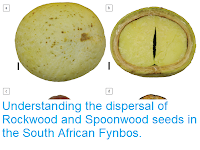The ability to glide has evolved several times in different Mammal groups, but only one group, the Flying Squirrels, Pteromyini, have a wide distribution, with a high diversity in the tropical regions of South and Southeast Asia and species scattered across cooler regions of Asia, Europe, and North America, hinting at a more diverse and widespread population during warmer climates in the past. The fossil record appears to support this, with many fossil species described, particularly from Europe, dating back as far as 36 million years ago (Eocene), slightly older than the first fossils of Tree Squirrels, Sciurinae, suggesting that the groups may have arisen separately. However, as with many Mammal groups, these fossils are entirely of teeth, and occasionally small fragments of jaw, which are not particularly distinctive from those of other Squirrels, and studies based upon genetics and molecular clock methods have suggested that the group may be only about 23 million years old (Miocene), and should be placed firmly within the Tress Squirrels, rather than being a separate group.
In a paper published in the journal eLIFE on 9 October 2018, Isaac Casanovas-Vilar of the Institut Català de Paleontologia Miquel Crusafont at the Universitat Autònoma de Barcelona, Joan Garcia-Porta of the Centre de Recerca Ecològica i Aplicacions Forestals at the Universitat Autònoma de Barcelona, Josep Fortuny, also of the Institut Català de Paleontologia Miquel Crusafont at the Universitat Autònoma de Barcelona, and of the Centre de Recherches sur les Paléoenvironnements et la Paléobiodiversité at the Muséum national d’Histoire naturelle, Óscar Sanisidro of the Biodiversity Institute at the University of Kansas, Jérôme Prieto of the Department für Geo- und Umweltwissenschaften, Paläontologie at Ludwig-Maximilians-Universität München, and the Bayerische Staatssammlung für Paläontologie und Geologie, Marina Querejeta of the Bavarian State Collection of Zoology, Sergio Llácer and Josep Robles, again of the Institut Català de Paleontologia Miquel Crusafont at the Universitat Autònoma de Barcelona, Federico Bernardini of the Museo Storico della Fisica e Centro Studi e Ricerche Enrico Fermi and the Multidisciplinary Laboratory at the ‘Abdus Salam’ International Centre for Theoretical Physics, describe the partial skeleton of a Flying Squirrel from the Miocene of Catalonia.
The specimen, and some associated material, were discovered during a palaeontological survey of a bonebed exposed at a site excavated for landfill use at Abocador de Can Mata in Catalonia, and is estimated to be 11.64 million years old, roughly on the boundary between the Middle and Late Miocene. It is referred to the species Miopetaurista neogrivensis, which has previously been described from dental material, and is estimated to have had a living mass of about 1.3 kg.
The specimen, and some associated material, were discovered during a palaeontological survey of a bonebed exposed at a site excavated for landfill use at Abocador de Can Mata in Catalonia, and is estimated to be 11.64 million years old, roughly on the boundary between the Middle and Late Miocene. It is referred to the species Miopetaurista neogrivensis, which has previously been described from dental material, and is estimated to have had a living mass of about 1.3 kg.
The fossil Flying Squirrel Miopetaurista neogrivensis. (a) Reconstruction of the skeleton based in the partial skeleton from Abocador de Can Mata. Missing elements are based on extant Giant Flying Squirrel, Petaurista petaurista, and are coloured in blue. (b) Life appearance of Miopetaurista neogrivensis showing the animal ready to land on a tree branch. Coat pattern and colour are based on extant Petaurista species, the sister taxon of Miopetaurista. Casanovas-Vilar et al. (2018).
See also...
Follow Sciency Thoughts on Facebook.







